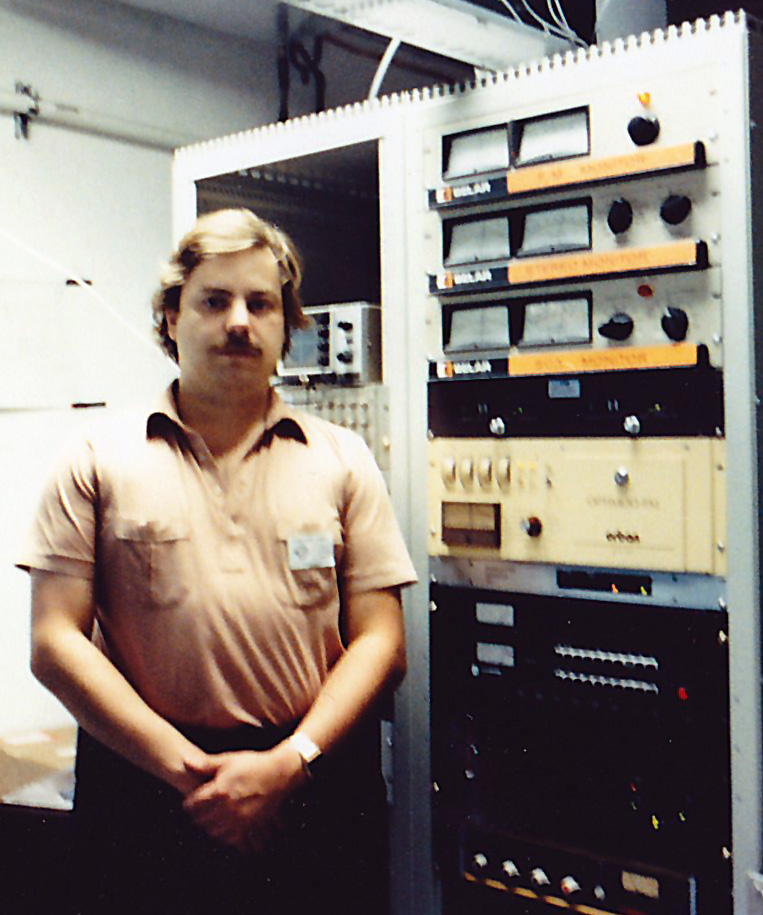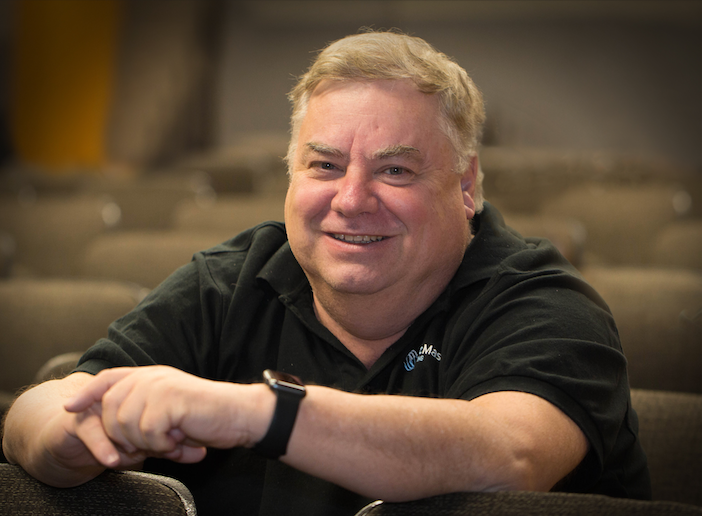The Story Behind the Story of Z-100
by Joe Knapp
President/Founder, MusicMaster
New York City. The Big Apple. If you can make it there, you can make it anywhere. I'd been to New York
before, but I never experienced it from the perspective of a local resident. That all changed in the summer
of 1983.
At that time, I was the Chief Engineer for Malrite Broadcasting's radio stations in Milwaukee, Wisconsin. My
specialties included building new studios and setting up audio processing. My corporate supervisor was the
Vice President of Engineering, Mr. Tom Bracanovich. He invited me to join him in New York as Malrite was
preparing to acquire the license of WVNJ-FM in Newark, New Jersey. The plan was to build new studios in
Secaucus and move the station's antenna from West Orange to the Empire State Building, making it the 12th
station to share that building's complex Alford antenna system. The transmitter room was to be built on the
83rd floor in room 8307. We spent many long nights up in the 'mast' working on that project with consulting
engineer Bob Silliman, who did much of the original engineering on that antenna.

My involvement started out assisting Tom by building the new studios in Secaucus. At that time, the entire
'Z-100' engineering team consisted of Tom and myself. Meanwhile, other corporate folks were working on the
selection of a Program Director and trying to decide what format to play on this brand new "New York" radio
station. WVNJ-FM had inadequate coverage of the metropolitan area at the time and they were playing
Beautiful Music in the daytime and Jazz at night.
I brought Jim Bertram, a cabinet maker in Wisconsin who built the foundation for the new Milwaukee studios
for me. Together, we designed and built the studio desks, then drove it all from Wisconsin to New York in a
trailer attached to Jim's pickup truck in one continuous fifteen-hour trek.
The corporate VP of Programming, John Chaffee, and the corporate Program Director, Jim Wood, hired a
research firm to conduct an auditorium test to determine which format would work best in the crowded New
York market. I had already established a great relationship with John and Jim, so I was invited to sit in on
these meetings. It came down to two format choices, either Jazz, or Top 40, which was also known as CHR. As
I recall, John was leaning toward Jazz, but the Executive Vice President of the company, Carl Hirsch,
insisted they go with the more glamorous CHR format.
Shortly after making that programming decision, Malrite found their Program Director. Scott Shannon had been
extremely successful in Tampa, Florida, and now he'd be relocating to New York to take the helm of what
would become WHTZ-FM, also known as Z-100. Since we all stayed at the same hotel, I got to know Scott
Shannon very well.
I loved hearing Scott talk about his former station. He told some very interesting stories! One day, while
having lunch at the hotel, Scott was talking about some crazy bit he and his morning team had done on his
previous station. Scott had this booming "radio" voice, cool southern accent, and spoke at a volume that
could be heard throughout the restaurant. As I sat there listening to him talk, I recall glancing around the
room. Everyone in the place had stopped talking and were hanging on every word he said. A chill came down my
spine. I knew then and there that something amazing was about to take the New York radio market by storm.
My boss had planned to reuse some of the older studio equipment from WVNJ-FM. Anything new would be
purchased for as little cost as possible. But, after getting to know Scott Shannon over several dinners at
our hotel, I figured out that there was a huge disconnect between what Scott was expecting and what Tom was
planning. Scott didn't know it yet, but he was not going to get the studio he wanted in this new station!
When I questioned Tom about this, he basically told me to ignore Scott and just follow his instructions. But
I could not let it end there. I had a very strong feeling that the success of this new radio station
depended on Scott's ability to create a brand based on his talent and experience. The train was not headed
in that direction.
I decided to do something unthinkable. When I'd worked at Malrite's stations in the corporate headquarters
of Cleveland, I'd developed a close relationship with Gil Rosenwald, another corporate executive. When I
explained the situation to Gil, he told me to sit tight. He'd take it from here.
Not long after that, I received a call from Carl Hirsch. He asked me if I could take over the project. He
explained that Tom had to return to Cleveland, but he never gave me a reason. I told him I could handle it
on my own. He then said the words that probably saved Z-100, "Joe, there's just one condition, I need you to
build exactly what Scott Shannon wants." A little panic set in before I told him that I'd need to pull some
strings to get everything we needed in time, and that I'd like to call in a helper or two. He quickly
agreed, saying I had Carte Blanche to do whatever it takes, regardless of the cost.
I called in Malrite engineers Girard "Gerry" Westerberg from Denver to work on the transmitter and Frank
Foti from San Francisco to help me finish the studios.
When Gerry called me in the wee hours of the morning to tell me the transmitter was on the air, I found a
radio and tuned it in. There was a beautifully clear signal on 100.3 FM. I opened the mic and made the
first-ever announcement on the new station. "This is WHTZ-FM in New York City on the air for test purposes."
Then I started the song, New York, New York by Frank Sinatra. I followed that with Smoke From A Distant Fire
by Sanford-Townsend Band. Those were actually the first songs ever played on Z-100.
Once we got on the air full-time, Scott asked me to stay on as Chief Engineer. I agreed to do that, but
ended up haggling with corporate management over my salary. The engineering friends I'd made in the city
told me how much more it costs to live there. We did eventually come to terms, but I still ended up
declining the offer. It made me sick to do that, frankly, because I didn't want to let Scott down. But my
wife and I had just had our first child, Laurie, and she wasn't even a year old yet. I'd also been selling
the music scheduling software I'd created in the fall of 1982. I brought my wife to New York to look at some
houses and we were both very disappointed with the area. The cultural and economic difference between
Milwaukee and New York were just too great. I've always believed that family comes first, so we stayed in
Milwaukee, raised three great kids, and I launched the music scheduling software company that would
eventually become known as MusicMaster, the number one brand in the world.
Frank Foti became the Chief Engineer at Z-100 and did incredible things for the station. Like me, he also
ended up running a very successful company.
And the rest is well-documented history.
About Joe
 Joe
Knapp's radio
career
began at the age of 11, when he built a transmitter
out of
spare parts and broadcast
illegally out of his childhood bedroom. From there, Joe went on to build other legitimate stations from the
ground up, including working alongside Scott Shannon to put New York's legendary Z-100 on the air. Joe also
worked as Chief Engineer and on-air host for several stations in Cleveland and Milwaukee, including WMMS-FM,
WZZP-FM, WWWM-FM, WQFM-FM and WZUU-FM. In 1983, Joe took out a book on computer programming and wrote a
music scheduling system to replace his station's unreliable card system. As demand for his program spread,
Joe launched his company, A-Ware Software. Nearly 40 years later, MusicMaster is used by thousands of radio
stations, including groups like Audacy, Univision, Cox, Saga, Salem, SiriusXM, Rogers, Bell, Viacom MTV,
Midwest Communications, Urban One, and many other great companies in dozens of countries around the world.
Joe
Knapp's radio
career
began at the age of 11, when he built a transmitter
out of
spare parts and broadcast
illegally out of his childhood bedroom. From there, Joe went on to build other legitimate stations from the
ground up, including working alongside Scott Shannon to put New York's legendary Z-100 on the air. Joe also
worked as Chief Engineer and on-air host for several stations in Cleveland and Milwaukee, including WMMS-FM,
WZZP-FM, WWWM-FM, WQFM-FM and WZUU-FM. In 1983, Joe took out a book on computer programming and wrote a
music scheduling system to replace his station's unreliable card system. As demand for his program spread,
Joe launched his company, A-Ware Software. Nearly 40 years later, MusicMaster is used by thousands of radio
stations, including groups like Audacy, Univision, Cox, Saga, Salem, SiriusXM, Rogers, Bell, Viacom MTV,
Midwest Communications, Urban One, and many other great companies in dozens of countries around the world.

